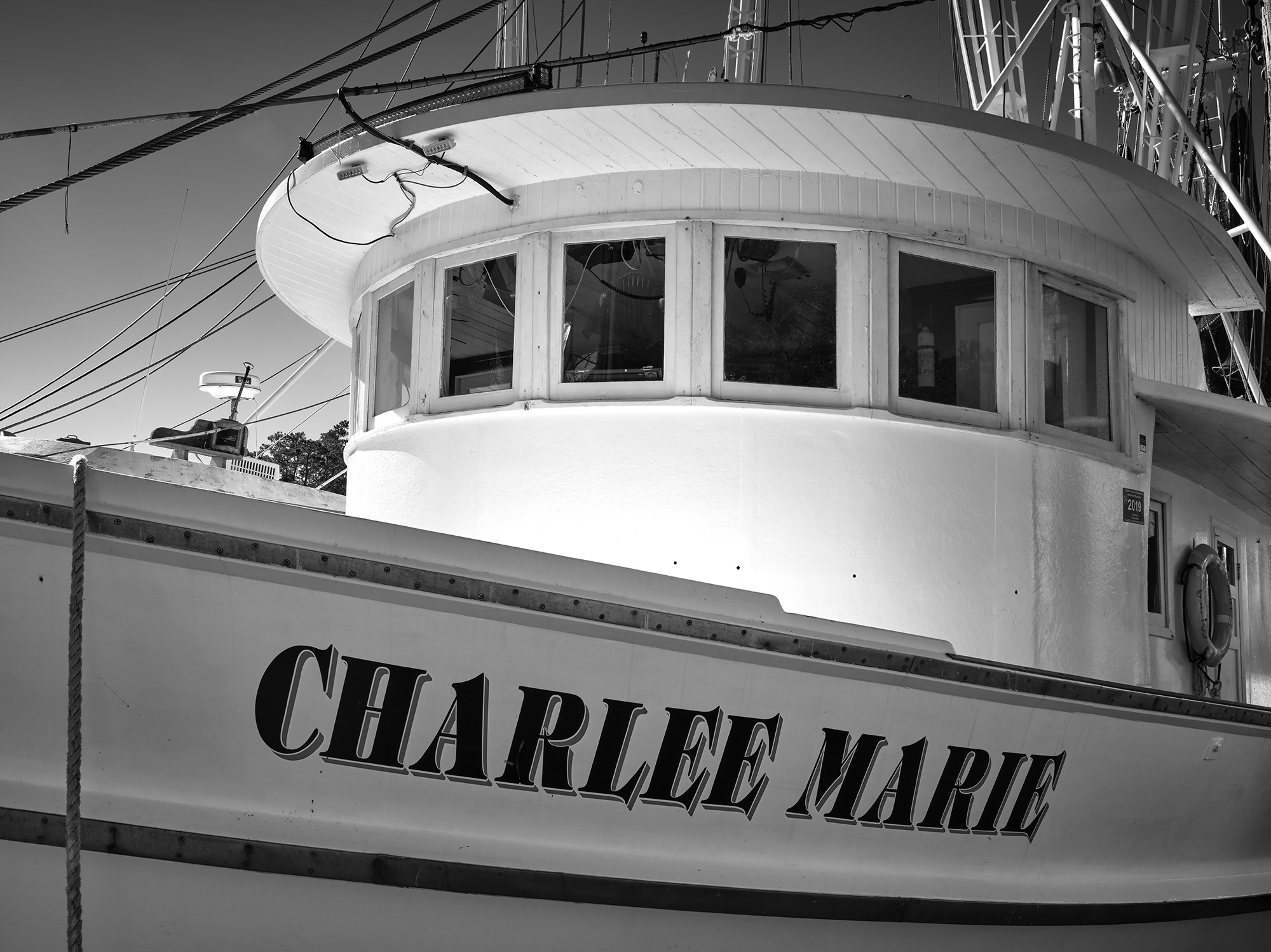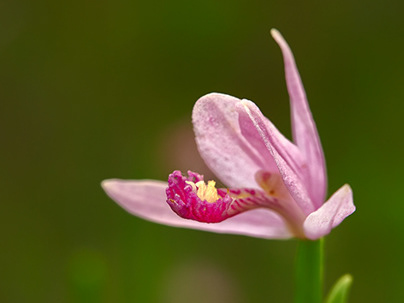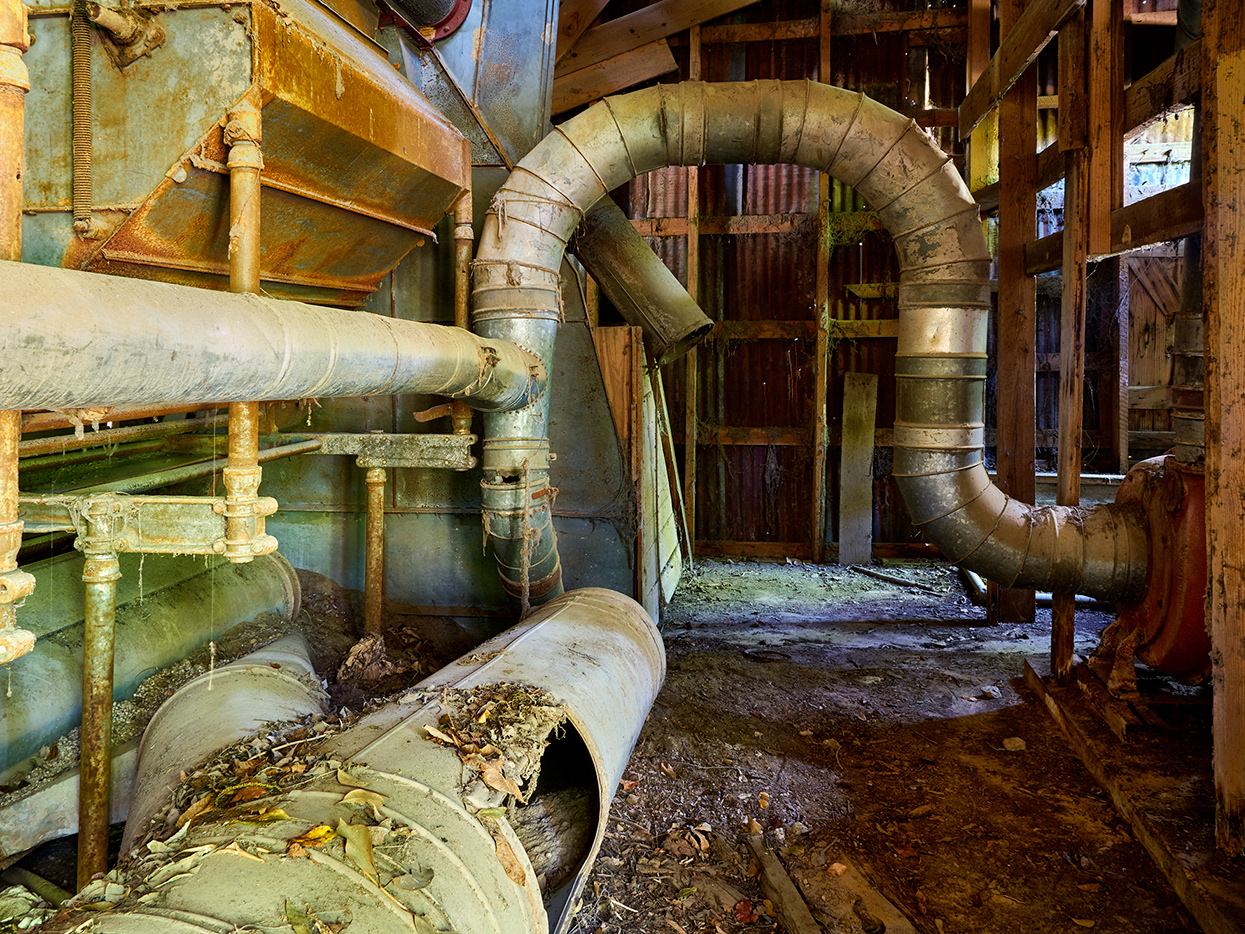The Vandyke brown print is based on the first iron-silver process, the argentotype, invented in 1842 by the English astronomer, Sir John Herschel. Both processes utilize the action of light on ferric salts and their chemistry is very similar. The Vandyke process gets its name from its similarity in color to the deep brown pigment used by the Flemish painter Van Dyck. Vandyke brown prints are very simple and economical to make, with the sensitizer consisting of three readily available chemicals. Clearing is carried out in water and fixing is done in a weak solution of hypo.
The addition of a 24K gold toning solution removes all of the silver salts in the picture and replaces them with pure gold! This darkes up the image and changes the dark brown areas more to black. The mid tones take on a gold cast.
Stormy Seas in Van Dyke Brown print, This is a re-corrected negative that I printed about 8 days ago and had to wait for today to print. It is a perfect exposure now with good contrast and detail.
Lana Paper, Fumed Alumina, 40dVDB-2dTween Brush coated Gold toned with a 1 min exposure in the light box.
Stormy Seas Infrared in Van Dyke Brown print, This is a re-corrected negative that I printed about 8 days ago and had to wait for today to print. It is a perfect exposure now with good contrast and detail.
Lana Paper, Fumed Alumina, 40dVDB-2dTween Brush coated Gold toned with a 1 min exposure in the light box.
Outer Banks FIshing Pier in Van Dyke Brown print, This is a re-corrected negative that I printed about 8 days ago and had to wait for today to print. It is a perfect exposure now with good contrast and detail.
Lana Paper, Fumed Alumina, 40dVDB-2dTween Brush coated Gold toned with a 1 min exposure in the light box.
Berry Mill in Van Dyke Brown print, This is a re-corrected negative that I printed about 8 days ago and had to wait for today to print. It is a perfect exposure now with good contrast and detail.
Lana Paper, Fumed Alumina, 40dVDB-2dTween Brush coated Gold toned with a 1 min exposure in the light box.
Magnolia in Van Dyke Brown print, This is a re-corrected negative that I printed about 8 days ago and had to wait for today to print. It is a perfect exposure now with good contrast and detail.
Lana Paper, Fumed Alumina, 40dVDB-2dTween Brush coated Gold toned with a 1 min exposure in the light box.
Oak Refleections Infrared in Van Dyke Brown print, This is a re-corrected negative that I printed about 8 days ago and had to wait for today to print. It is a perfect exposure now with good contrast and detail.
Lana Paper, Fumed Alumina, 40dVDB-2dTween Brush coated Gold toned with a 1 min exposure in the light box.
Van Dyke Brown with 24K Gold toning done on Lana Acid Washed Paper
Van Dyke Brown with 24K Gold toning done on Lana Acid Washed Paper
Van Dyke Brown with 24K Gold toning done on Lana Acid Washed Paper
Van Dyke Brown with 24K Gold toning done on Lana Acid Washed Paper
Van Dyke Brown with 24K Gold toning done on Lana Acid Washed Paper










